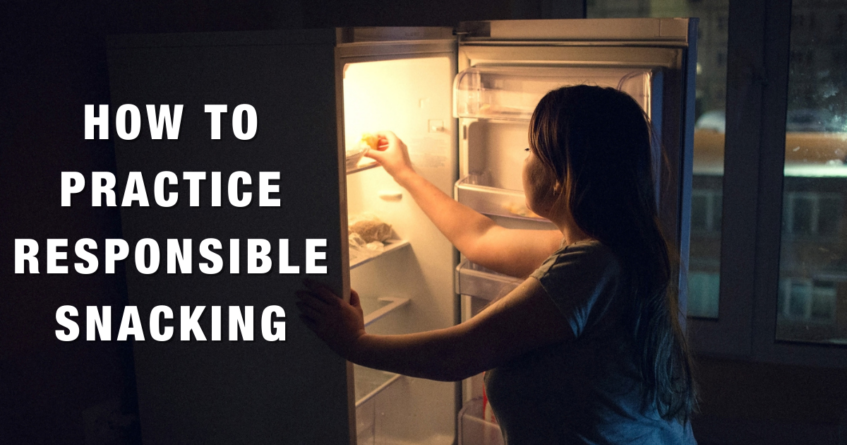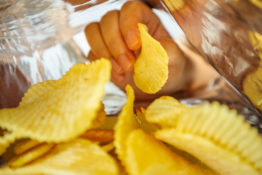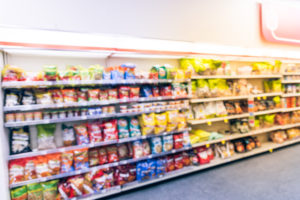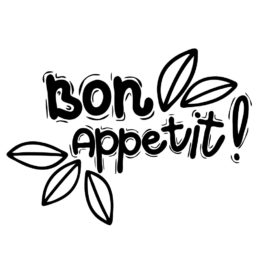
by Polina Vorobeychik, Registered Dietitian
Snacks, snacks, snacks.
 We live in the world of snacking. Aisles and aisles of grocery stores that are dedicated to salty, savory and sweet snacks. In the 19th century, most people did not snack. It was considered poor manners to snack in between meals. Snacking began to change in 1896 when a new product hit the market, Cracker Jack, a sweet popcorn peanut snack. The developers saw an opportunity to encourage snacking and it opened the floodgates. It is not until recently, however, that snacks have become firmly fixed in the American diet. The food industry has been encouraging us, consumers, to snack more by telling us that we constantly need fuel to keep up with our busy schedules. Reading between the lines: more snacking equals more revenue.
We live in the world of snacking. Aisles and aisles of grocery stores that are dedicated to salty, savory and sweet snacks. In the 19th century, most people did not snack. It was considered poor manners to snack in between meals. Snacking began to change in 1896 when a new product hit the market, Cracker Jack, a sweet popcorn peanut snack. The developers saw an opportunity to encourage snacking and it opened the floodgates. It is not until recently, however, that snacks have become firmly fixed in the American diet. The food industry has been encouraging us, consumers, to snack more by telling us that we constantly need fuel to keep up with our busy schedules. Reading between the lines: more snacking equals more revenue.
The snacks that are advertised most heavily to the consumer are, as a rule, ultra-processed foods, because they are the most profitable. Costs increase as food items undergo more processing. For instance, let’s take a potato. It is not a very expensive item that you can get at any grocery store. Now, let’s take the same potato and cook it and freeze it or fry it and bag it, the potato now increases in value. At Walmart, 1 pound of potato chips costs $4.08 and 1 pound of raw potatoes costs $0.59.
Snacks are everywhere and they are hard to resist. We are designed to eat. That is why it sometimes feels like the Spanish Inquisition when you pass by the candy dish and not to grab a few sweet treats.
As much as a quarter of Americans’ daily calories come from snacks. Snacks are convenient, especially if you have a busy lifestyle and you need something quick. When this is the case, it is very hard to make smart, healthy decisions about what you eat. Therefore, one way to forego the temptation of ultra-processed foods is to plan ahead. You should decide the day before what snack you will eat the next day. Additionally, you have to make snacks readily available so that when your cravings or hunger strike, you already have a battle plan.
What can we do instead?

To keep your hunger at bay until the next meal, I recommend combining food groups, especially if you are eating a starch, such as, a potato product. A starch by itself gets absorbed into your bloodstream very rapidly, increasing your blood sugar. However, this blood sugar is then rapidly absorbed, and therefore, soon after, you will suddenly have low blood sugar again, which makes you hungry. To avoid having these highs and lows in blood sugar, combine a starch (carbohydrate) with a fat or a protein. Fat or protein slows down the absorption of sugars into the body.
Starting Sunday, January 29, I am kicking off my virtual group class that will explore our diet mentality. The program is called H.E.L.P. (Healthy Eating Lifestyle Program). We will start identifying our true hunger instead of an emotional one and understanding mindless eating. Additionally, I will take you on a tour of a grocery store and it will open your eyes to the intentional design of stores to encourage impulse buys. Finally, we will set goals together and work through them as a community. We will create a community of individuals who are working on improving their relationship with food and improving their health and energy.
Join me for a FREE pop-up class on January 29 at 11am. Anyone is free to join the pop-up and check out this virtual class! Interested? Contact Bernie Suddarth, 314-442-3452.
Also, here are some suggestions of the snacks you can have readily available. Remember, the key is to prep ahead such as cutting up fruit and veggies ahead.
- Bell peppers with hummus
- Apples with peanut butter
- Nut and dried fruit mix
- String cheese and whole grain crackers
- Tuna salad with lettuce
- Hard boiled egg

